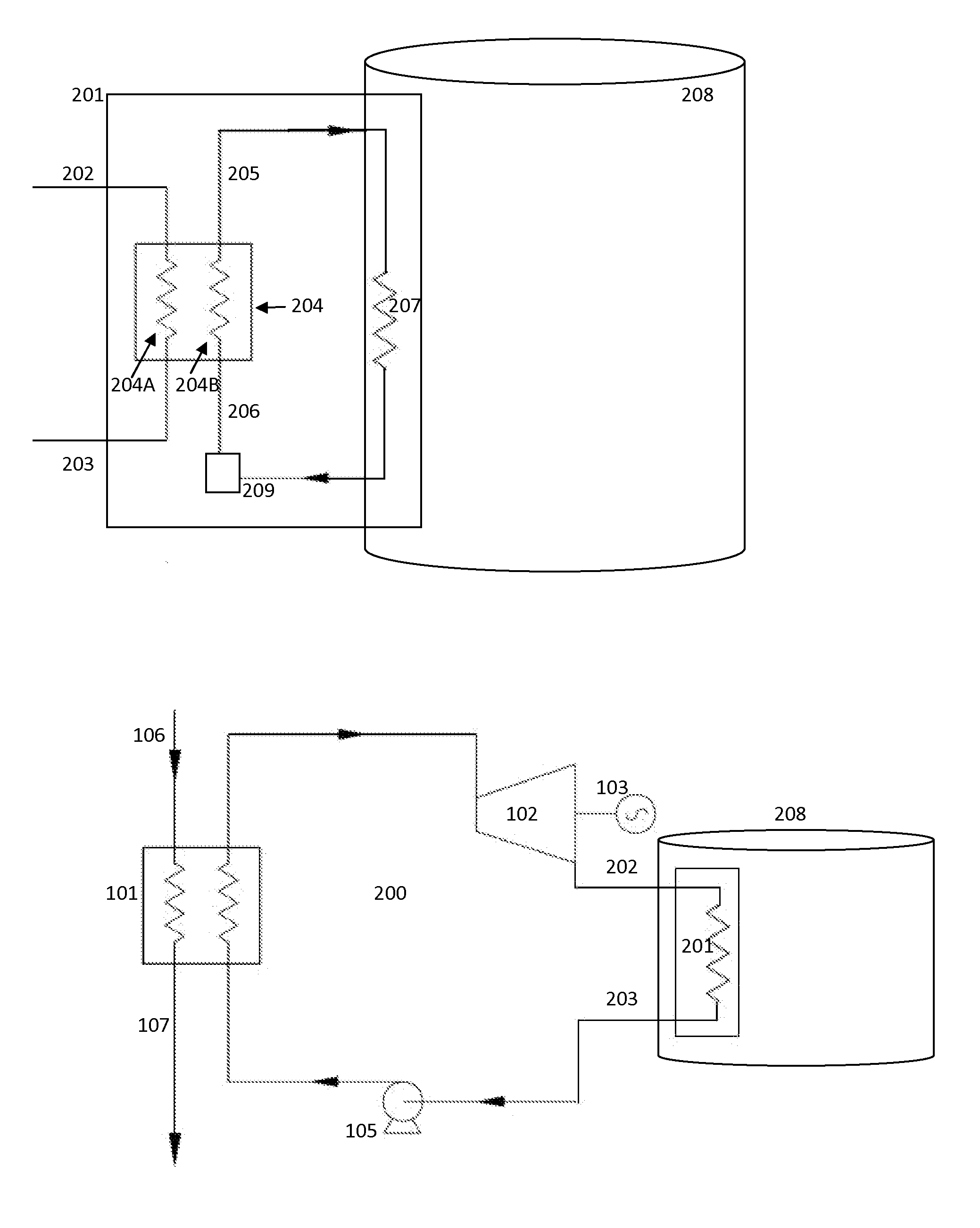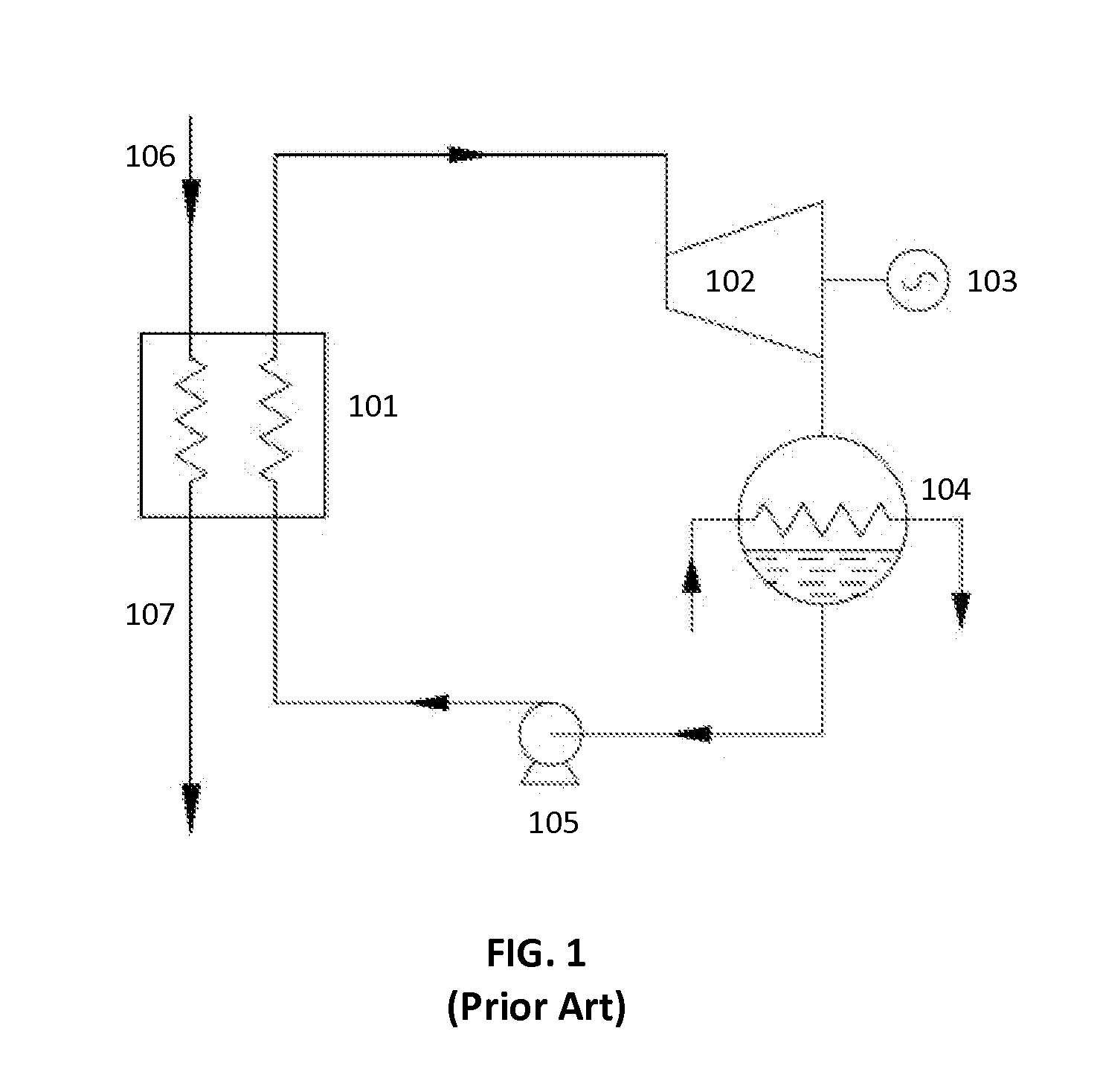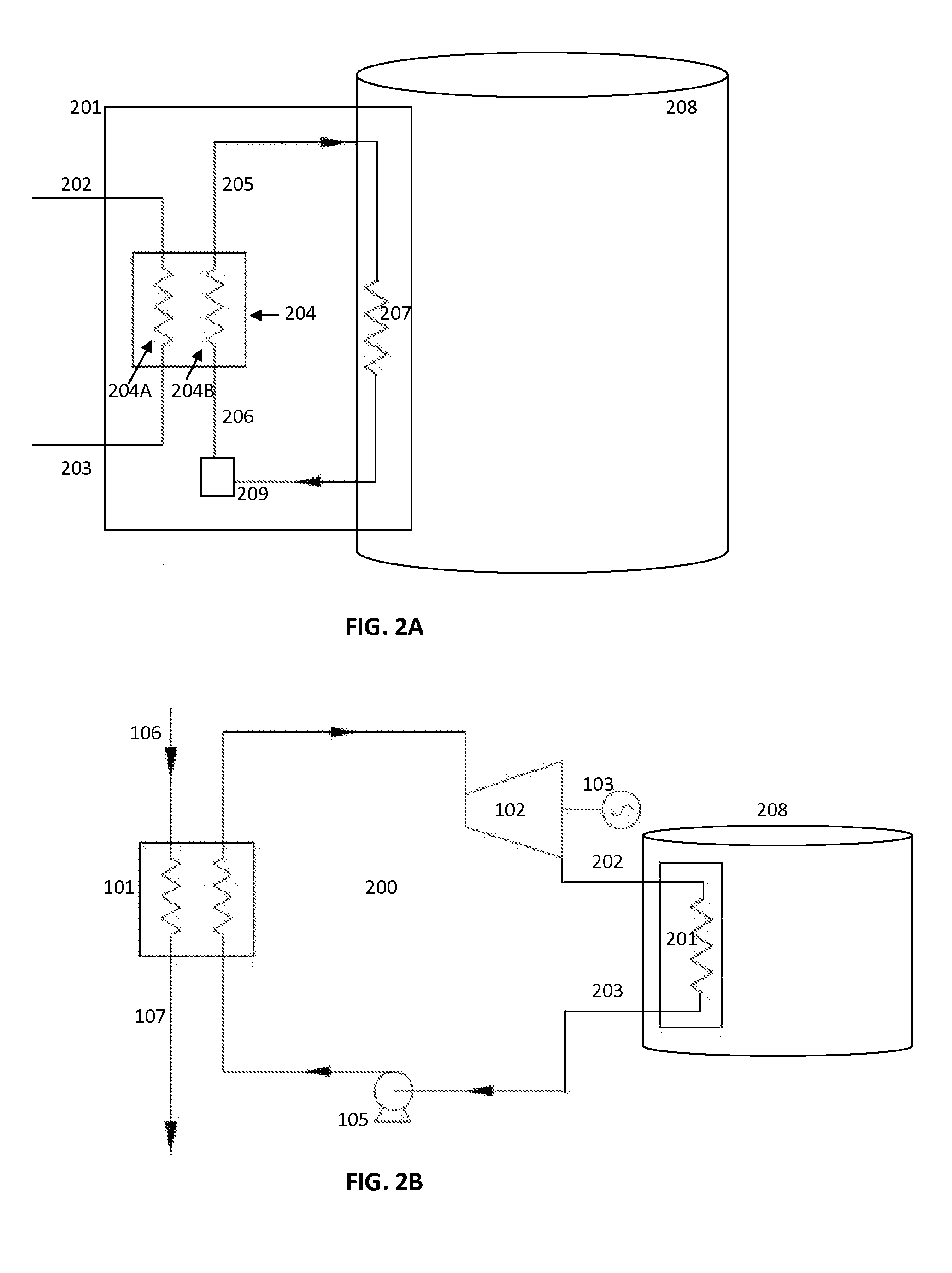Heat Utilization in ORC Systems
a rankine cycle and orc technology, applied in the field of organic rankine cycle systems, can solve the problems of unavoidable generation of significant unwanted heat, unavoidable degree of residual heat escape or remain, and achieve the effect of managing and/or dissipating the degree of residual hea
- Summary
- Abstract
- Description
- Claims
- Application Information
AI Technical Summary
Benefits of technology
Problems solved by technology
Method used
Image
Examples
Embodiment Construction
[0050]The process of anaerobic digestion is well known in the art. Certain strains of bacteria, in the absence of oxygen, are employed to break down, or digest, certain biodegradable material including food, yard, or other waste into byproducts such as combustible gasses consisting of methane, hydrogen, and other trace components, as well as a residual solid effluent byproduct. This effluent, or sludge, contains ammonia, phosphorous, potassium, and other trace materials and is beneficial to agriculture as a supplemental enrichment fertilizer for soil or as a resource suitable for combustion fuel to generate heat energy for any useful purpose.
[0051]The anaerobic digestion process involves three basic stages involving different microorganisms, and the temperature of the cultures can play a very significant role in the efficiency of the digestion process. Mesophilic digestion, occurring at medium temperatures, can be applied to discrete batches of biodegradable waste while thermophilic...
PUM
 Login to View More
Login to View More Abstract
Description
Claims
Application Information
 Login to View More
Login to View More - R&D
- Intellectual Property
- Life Sciences
- Materials
- Tech Scout
- Unparalleled Data Quality
- Higher Quality Content
- 60% Fewer Hallucinations
Browse by: Latest US Patents, China's latest patents, Technical Efficacy Thesaurus, Application Domain, Technology Topic, Popular Technical Reports.
© 2025 PatSnap. All rights reserved.Legal|Privacy policy|Modern Slavery Act Transparency Statement|Sitemap|About US| Contact US: help@patsnap.com



